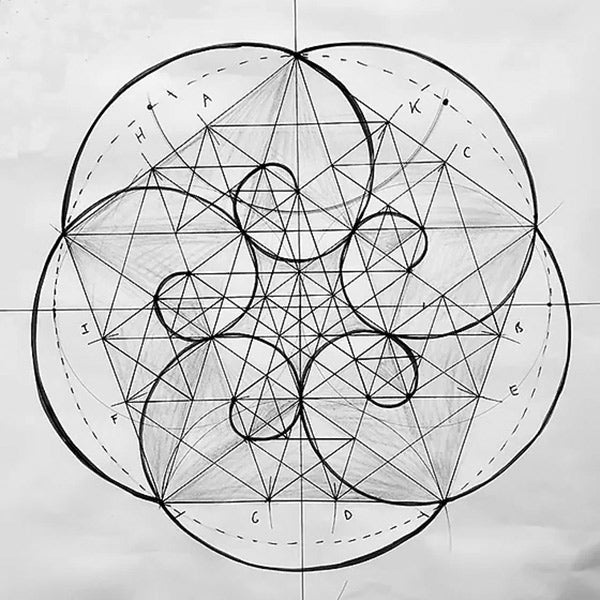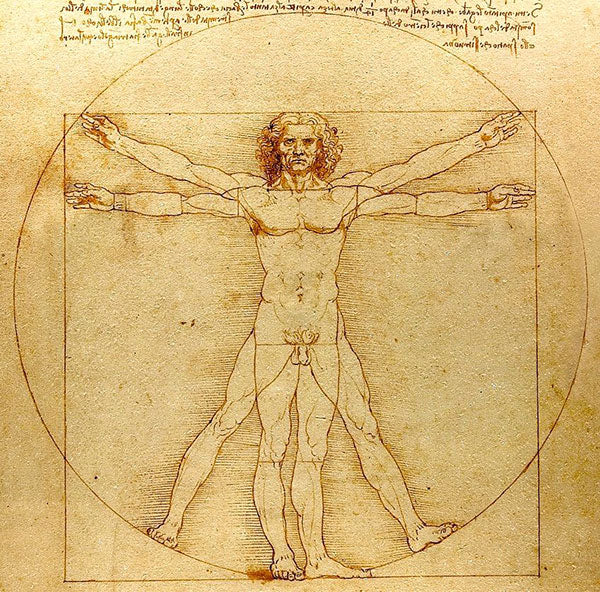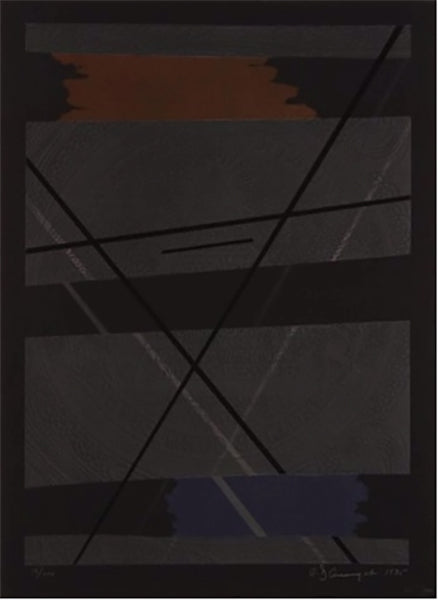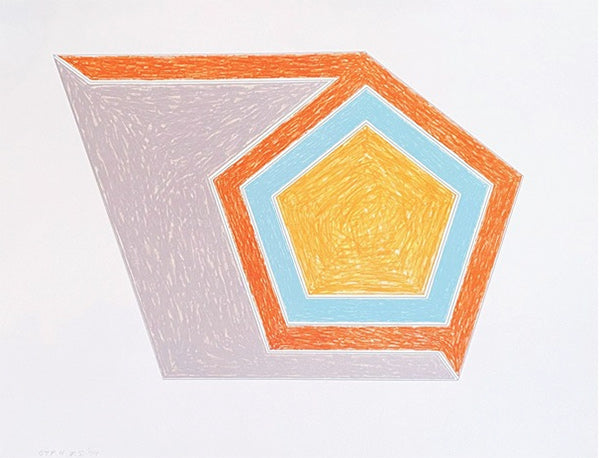The Golden Spiral and Pentagons in Nature
More five sided fun
And more pentagons to mark 5 years of DressCode. This time we are looking at the Golden Spiral, an aesthetic phenomenon that is based on pentagonal mathematics. It's often described as nature and art in perfect harmony. Where the 'golden ratio' and pentagonal shapes are closely linked. It's a model has inspired people for centuries.
Many Artists have woven the Golden Spiral into their work, creating a visual sense of harmony and aesthetic balance that resonates with people Here’s the secret sauce…

The golden rule is - when a regular pentagon is inscribed in a circle, the ratio of the circle's diameter to the pentagon's side length is the golden ratio, approximately 1.61803398875.

The Golden Spiral concept can be seen in various natural phenomena, things such as the spiral arrangement of sunflower seeds and even the shape of galaxies.

Pentagons in nature
The pentagon's charm means it doesn’t have to be a perfect geometrical form. Pentagons are found all around us in the natural world. One of the most obvious examples would be any of the numerous five-petaled flowers, things such as the cherry blossom or apple blossom.

These natural wonders demonstrate the harmony and balance found in pentagonal structures, it’s another sign that nature really is amazing, naturally creating and using these shapes.

The vibrant Starfruit, also known as Carambola, slices into a distinctive 5 pointed star shape, with five distinct lobes resembling a pentagon when viewed from above.
Religon and pentagons
Pentagons hold spiritual significance for several cultures, often representing harmony, unity and the interconnectedness of things. Not really a surprise given what we know about the Golden Spiral, and the way our brains are hard wired to this aesthetic. The pentagon is associated with the concept of Phi - the golden ratio – mentioned above, also the five elements - earth, air, fire, water, and spirit.
Intricate patterns of pentagons can be found in ancient architecture and religious symbols worldwide, from the mesmerizing Islamic geometric tiles to the mystical pentagonal designs in Celtic art.
Here's 9 of the most famous pieces of art that feature pentagons.

-
Vitruvian Man by Leonardo da Vinci
I know this is going to appear obvious, but Vitruvian Man always comes front of mind when we think of pentagons. Although the primary focus of this iconic drawing is the representation of 'ideal' human proportions, it contains pentagonal shapes within its geometric construction. The position of the limbs and the navel forms a pentagon within the larger circular shape, Leonardo had a strong interest in the geometric harmony found in the human body.
-
Penrose Stairs by M.C. Escher.
We are huge fans of Escher, a master of optical illusions, the Penrose Stairs has another layer of confusion, also being known as 'Ascending and Descending'. Whichever name you use, this image perfectly demonstrates Escher's sublime skill. The artwork features a continuous loop of stairs that seemingly ascend and descend infinitely. Within the design, pentagonal shapes play a role in creating the impossible architectural structure, adding to the mind-bending visual puzzle.
-
Study after Velázquez's Portrait of Pope Innocent X by Francis Bacon
This famous painting depicts a distorted and nightmarish version of Diego Velázquez's original portrait of Pope Innocent X. While pentagons are not obvious here, there visual tension is used in the abstract and fragmented forms surrounding the figure.
-
Pentagon by Kenneth Noland
Kenneth Noland is an American abstract artist who is associated with the Color Field movement. He created a series of paintings that he called "Pentagon" in the 1960's. The artworks are characterised by large shapes and vibrant colours, showcasing the beauty and simplicity of geometric abstraction.

-
Pentagon by Jean Dewasne
Jean Dewasne is a French abstract painter and geometric abstractionist, who created a painting titled "Pentagon" in 1955. This artwork exemplifies Dewasne's explorations of geometric shapes and colour.

-
Various works by Kenneth Martin
Kenneth Martin, a British artist and leading figure in Constructivist art, created his "Pentagon" art in 1966. This abstract painting explores the interaction of geometric shapes, with the pentagon taking centre stage as the foundational element.

-
Various pieces by Allan D'Arcangelo
Allan D'Arcangelo, an American artist associated with the Pop Art movement, created a painting titles "Pentagon" in 1967. In his artwork, D'Arcangelo incorporated pentagonal shapes and other geometric forms to explore the 'intersection of art and contemporary culture'.

-
Various pieces by Frank Stella
Frank Stella is a prominent American abstract artist, he created numerous Pentagon themed pieces. These are large-scale pieces, several metres wide in many cases. Stella's minimalist style and his mastery of geometric abstraction features pentagonal shapes arranged in a dynamic and visually striking composition.
-
Black Pentagonal by Louise Nevelson
Louise Nevelson is an American sculptor known for her monumental monochromatic works. She created "Black Pentagonal" in 1964. It's a large-scale wooden relief sculpture that features a pentagonal form, showcasing Nevelson's mastery in creating dynamic and intriguing geometric compositions in wood (unfortunately we cannot find a picture of it).
Party on
The party's not over yet! As we conclude this part of the birthday Pentagonal journey, we hope you've been inspired by the magic and wonders of the five-sided shape. Celebrating 5 years of DressCode Shirts with a pentagon theme has allowed us to explore this shape and it's mind bending properties in more depth.
We have been fascinated by the propensity of the pentagonal form in everything from the natural world to mathematics, art, and architecture (more about this in our next blog).
The pentagon is a major part of our visual world, and has been captivating minds for centuries. It’s certainly kept us busy over the past few weeks, and these blogs we hope inspire you, in the same way the number five and five-sided shapes, have inspired us to design this shirt.

